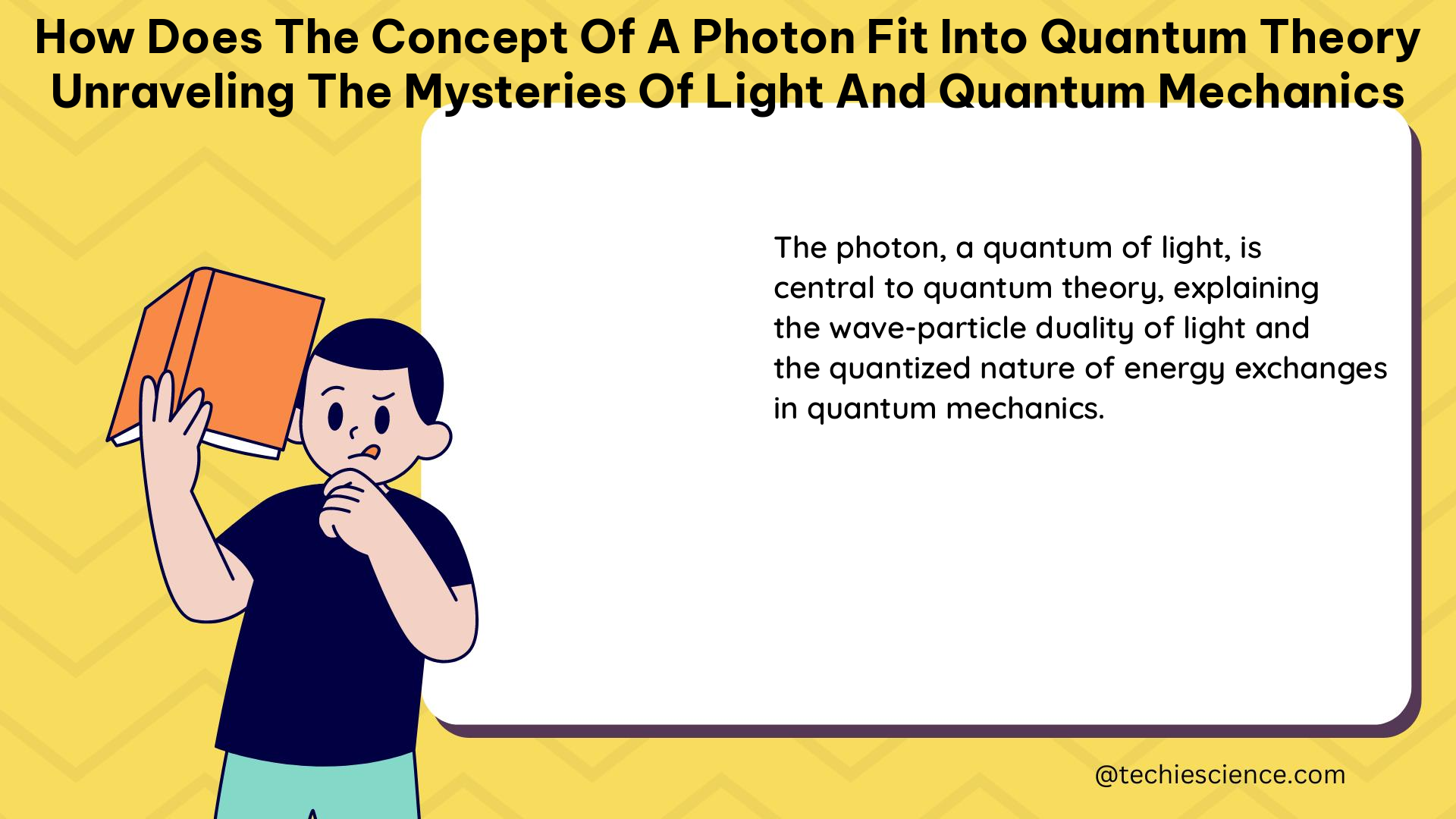The concept of a photon is a fundamental aspect of quantum theory that helps to unravel the mysteries of light and quantum mechanics. Photons are quantum mechanical elementary particles that are the building blocks of classical electromagnetic waves, exhibiting both wave-like and particle-like behavior, and their measurement and properties are governed by the principles of quantum mechanics.
The Particle Nature of Light: Photons and Lasers
Photons are as real as electrons or protons, with the key difference being that photons do not have rest mass, while electrons and protons do. One of the key ways that photons are measured is through the use of lasers, which are a macroscopic manifestation of the quantum mechanical particle nature of light.
Lasers work by stimulating the emission of photons from atoms or molecules, where the photons are all of the same wavelength and phase, resulting in a highly coherent and directional beam of light. This process is governed by the principles of quantum mechanics, specifically the concept of stimulated emission, where the presence of a photon can trigger the emission of an identical photon from an excited atom or molecule.
The Heisenberg Uncertainty Principle and Photon Measurement

The behavior of photons is governed by the principles of quantum mechanics, which dictate that the measurement of one property of a quantum system, such as position or momentum, will inherently result in uncertainty in the measurement of the other property. This is known as the Heisenberg uncertainty principle.
For example, if we try to measure the position of a photon, we will inherently introduce uncertainty in the measurement of its momentum, and vice versa. This principle has important implications for the measurement of photons, as it sets fundamental limits on the precision with which we can simultaneously measure certain pairs of physical properties.
Wave-Particle Duality and the Double-Slit Experiment
In addition to the uncertainty principle, the concept of wave-particle duality is also central to the behavior of photons. This principle states that photons can exhibit both wave-like and particle-like behavior, depending on the circumstances of the measurement.
One of the most famous demonstrations of this wave-particle duality is the double-slit experiment, where individual photons that are observed behave differently than those that are not observed. When observed, the photons form a pattern on a screen that is consistent with particle behavior, while the unobserved photons form a pattern that is consistent with wave behavior.
This experiment highlights the fundamental role of the observer in quantum mechanics, as the act of measurement can influence the behavior of the quantum system being observed.
The Wigner Function and Quantum Measurement
Another important concept in the measurement of photons is the Wigner function, which is a quasi-probability distribution that can be treated as a probability distribution on phase space in certain cases. This function can be used to model the behavior of quantum systems, including those used as part of measuring devices, and to establish consistency conditions for when a quantum-mechanical system can be treated as a measuring apparatus.
The Wigner function provides a way to represent the state of a quantum system in a phase space, which is a mathematical space that combines the position and momentum of a particle. This representation can be used to analyze the behavior of photons and other quantum systems, and to understand the limitations and uncertainties inherent in their measurement.
The Born Rule and Quantifying Photon Measurement
In terms of quantifiable data, the measurement of photons can be described using the Born rule, which is a mathematical formula for calculating the probabilities of measurement outcomes in quantum mechanics. This rule involves combining a quantum state, which mathematically describes a quantum system, with a mathematical representation of the measurement to be performed on that system.
The Born rule is a fundamental principle of quantum mechanics that allows us to make quantitative predictions about the outcomes of measurements on quantum systems, including photons. It provides a way to calculate the probability of obtaining a particular measurement result, given the state of the quantum system and the measurement being performed.
Conclusion
The concept of a photon is a crucial aspect of quantum theory, and the measurement of photons is a key area of research in the field of quantum mechanics. By understanding the behavior of photons and the principles that govern their measurement, such as the Heisenberg uncertainty principle, wave-particle duality, the Wigner function, and the Born rule, we can gain a deeper understanding of the mysteries of light and quantum mechanics.
This knowledge has important implications for a wide range of applications, from the development of advanced optical technologies to the exploration of the fundamental nature of reality. As we continue to unravel the complexities of quantum mechanics, the concept of the photon will remain a central and fascinating topic of study.
References:
- Quantum Theory’s Measurement Problem May Be a Poison Pill for Objective Reality
- How is a photon measured?
- Measurement in quantum mechanics
- Wigner function
- Is quantum mechanics just a result of how we measure things?

The lambdageeks.com Core SME Team is a group of experienced subject matter experts from diverse scientific and technical fields including Physics, Chemistry, Technology,Electronics & Electrical Engineering, Automotive, Mechanical Engineering. Our team collaborates to create high-quality, well-researched articles on a wide range of science and technology topics for the lambdageeks.com website.
All Our Senior SME are having more than 7 Years of experience in the respective fields . They are either Working Industry Professionals or assocaited With different Universities. Refer Our Authors Page to get to know About our Core SMEs.